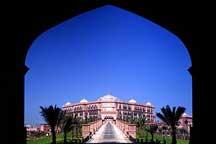 Apr. 9, 2025
Apr. 9, 2025
Weather
What does Tibet's population growth indicate?
2009-08-01 17:15 BJT
(Source: People's Daily Online)
BEIJING, July 18 -- Tibet's population was 1.18 million in 1959 and has now multiplied 2.43 times to over 2.87 million. The total population of China was more than 670 million in 1959 and has now increased 1.94 times, to more than 1.3 billion. In the same period of time, the growth rate of Tibet's population far surpassed that of the rest of China. Why has the population in Tibet, unchanged for hundreds of years, shot up within 50 years? What does the rapid growth of new Tibet's population mean?
Politically, obtaining civil rights laid a cornerstone for the development of Tibet's population. In 1959, the Democratic Reform removed the relationship of personal dependence between serfs and their masters. Children of serfs who were fully emancipated were no longer private properties of the master, but were young "masters" of the Tibetan Autonomous Region. This has undoubtedly provided a driving force for Tibet's population growth.
Obtaining economic ownership also laid a foundation for Tibet's population development. Before Democratic Reform, serfs who were pregnant or giving birth affected their labor and were inauspicious from their master's traditional viewpoint. Serfs could only give birth in cowsheds and sheep pens, and were sometimes ruthlessly banished. After the Democratic Reform, however, many farmers and herdsmen owned land and other production tools, which meant that they had their own property. Therefore, population growth was secured on a material basis.
Development of infrastructure such as health care provided a guarantee for Tibet's population growth. Before Democratic Reform, the infant mortality rate was shockingly high and the average life expectancy was only 35.5. After the Democratic Reform, thanks to the central government's care and nationwide support, Tibet's infrastructure including health care was set up and the average life expectancy has now reached 67.
The rapid growth of Tibet's population powerfully counters some Western figures' "worries" about the region's situation. Any honest visitor to the region knows what their "worries" are. They are not worried about China falling apart, but feel that China will become strong and prosperous. They are not worried about ethnic conflicts intensifying, but feel that the 56 ethnic groups in China will join forces to promote prosperity and progress. They are not worried about separatists committing crimes, but worry that "human rights defenders" will have no chance to enchant the general public. Now Tibet receives thousands of Chinese and foreign tourists every day. Tibet's development and changes are obvious to all and are praised by people around the world. The fact that Tibet's population has nearly doubled in 50 years is the best proof. Individuals intending to smear the Tibet Autonomous Region's reputation cannot hinder the region's march forward.
Editor: 卢佳颖 | Source:
 Mail
Mail Share
Share Print
Print


 Video
Video









 2009 China Central Television. All Rights Reserved
2009 China Central Television. All Rights Reserved